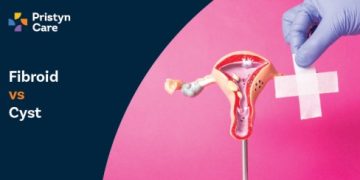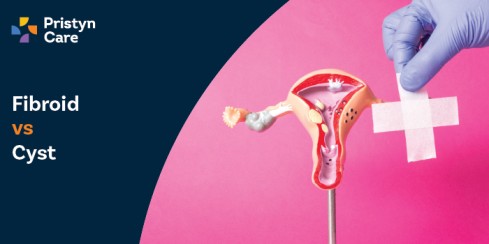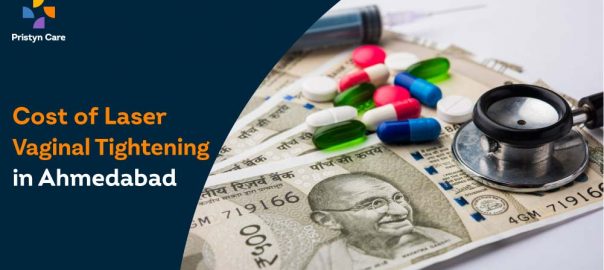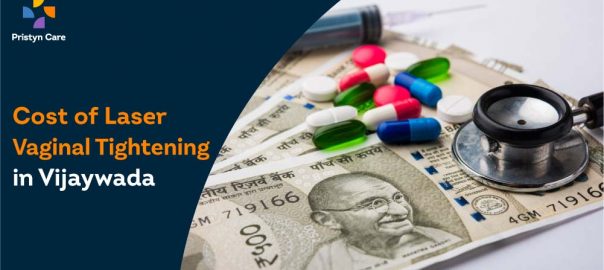![]() Views: 156
Views: 156
Fibroid Vs Cyst
Experiencing unusual abdominal discomfort or bloating can be worrying. When a doctor mentions terms like 'fibroids' and 'cysts,' it's normal to feel overwhelmed. What do these terms mean? Are they serious?
Dedicated Support at Every Step!
Our Doctors are available 24 hours a day, 7 days a week to help you!
Understanding the difference between fibroids and cysts is crucial for your peace of mind and health management. Fibroids are non-cancerous growths in the uterus, often found during the childbearing years. Cysts, on the other hand, are fluid-filled sacs that can develop anywhere in the body, commonly appearing in the ovaries.
Each condition has distinct symptoms and treatment pathways. This blog will demystify these terms, breaking down their differences, symptoms, and management strategies in a clear manner.
Table of Contents
What are Fibroids?
Fibroids are non-cancerous growths that develop in or around the womb (uterus). These growths are made up of muscle and fibrous tissue. They vary in size and can affect women of any age, but they are most common in women aged 30 to 50.
Causes and Risk Factors
The exact cause of fibroids is unknown, but several factors may influence their formation:
- Hormones: Estrogen and progesterone, two hormones that help regulate the menstrual cycle, seem to promote the growth of fibroids.
- Family History: If your mother, sister, or grandmother has a history of this condition, you might be more likely to develop it as well.
- Ethnicity: There is a higher prevalence of fibroids in black women than in women of other ethnic backgrounds.
- Obesity: Being overweight puts you at a higher risk of developing fibroids.
- Diet: Consuming a lot of red meat and ham has been linked to a higher risk of fibroids. Eating plenty of green vegetables may have a protective effect.
Common Symptoms
Many women with fibroids do not experience any symptoms. However, when symptoms occur, they may include:
- Heavy Menstrual Bleeding: One of the most common signs is prolonged and heavy periods.
- Pelvic Discomfort: Women may feel a sense of fullness or pressure in the pelvic area.
- Frequent Urination: The growth can press on the bladder, resulting in frequent trips to the bathroom.
- Pain During Intercourse: Some women report discomfort or pain during sexual intercourse.
- Lower Back Pain: Larger fibroids may cause a dull ache in the lower back.
No Cost EMI, Hassle-free Insurance Approval
What are Cysts?
Cysts are fluid-filled sacs that can form in various parts of the body. Unlike solid growths, these sacs are encapsulated and can vary widely in size. Cysts are generally benign but can cause discomfort and other symptoms depending on their location and size.
Types of Cysts
The body can develop various types of cysts, including:
- Ovarian Cysts: These form on or inside the ovaries. They are common during the reproductive years. Most ovarian cysts are harmless and resolve on their own.
- Breast Cysts: These are soft to touch and can be found in the breast tissue. They might feel tender or sore before your menstrual period.
- Sebaceous Cysts: Located under the skin, these are filled with a thick, cheese-like substance. They are commonly found on the face, neck, or torso.
- Ganglion Cysts: These are most often found on wrists or hands and are filled with a jelly-like fluid.
Causes and Risk Factors
While the causes of cysts can vary by type, some common risk factors include:
- Hormonal Changes: For ovarian and breast cysts, hormonal fluctuations play a significant role.
- Injuries: An injury can lead to cyst formation, especially ganglion cysts in the wrists or hands.
- Blocked Glands: Sebaceous cysts can form when oil glands are blocked.
- Genetic Predisposition: Some types of cysts, like polycystic kidney disease, are inherited.
Common Symptoms
Cysts often do not cause any symptoms unless they grow large enough to disrupt normal body functions. When symptoms do occur, they may include:
- Pain: Cysts can be painful, particularly if they rupture or become infected.
- Swelling: The area around a cyst may swell if the cyst grows large.
- Tenderness: Cysts can be tender to the touch, especially just before the menstrual cycle in the case of breast cysts.
- Visible Lump: Some cysts, like sebaceous and ganglion cysts, are visible on the skin's surface.
Comparative Analysis
When it comes to fibroids and cysts, understanding both their similarities and differences is essential for effective health management. While these conditions can affect women's health, they have distinct characteristics and implications.
Similarities between Fibroids and Cysts
Both fibroids and cysts share a few common traits:
- Non-cancerous nature: Both fibroids and cysts are typically benign and not cancerous.
- Formation in women: They predominantly occur in women, particularly during their reproductive years.
- Potential to be asymptomatic: Many women with fibroids or cysts experience no symptoms at all, making accidental discovery during routine checks common.
- Influence of hormones: Hormonal fluctuations can influence both conditions, often exacerbating or alleviating symptoms.
Key Differences
Despite their similarities, fibroids and cysts differ significantly:
- Location and Composition: Fibroids develop from the muscle tissue of the uterus, whereas cysts can appear in various parts of the body, including the ovaries, breasts, or skin, and are filled with fluid or other materials.
- Symptoms and complications: Fibroids can cause severe menstrual bleeding and chronic pelvic pain, whereas cysts are more likely to cause pain only if they rupture or become infected.
- Treatment approaches: Treatment for fibroids might include medication to regulate hormones or surgery in severe cases. Cysts often require no treatment unless they cause discomfort or complications, in which case they may be drained or surgically removed.
Impact on Fertility and Pregnancy
The influence of fibroids and cysts on fertility and pregnancy can vary:
- Fibroids: Depending on their size and location, fibroids can block the fallopian tubes or interfere with the implantation of the embryo, potentially leading to fertility issues. During pregnancy, fibroids may grow due to increased hormone levels, potentially causing discomfort or even complications such as preterm delivery.
- Ovarian Cysts: Most ovarian cysts do not affect fertility unless they are a part of a condition like polycystic ovary syndrome (PCOS), which can interfere with ovulation. However, cysts can cause complications during pregnancy if they rupture or twist.
- Management during pregnancy: Both conditions require careful monitoring during pregnancy. In some cases, the management might include planned delivery or additional ultrasounds to assess the growth or changes in the condition of the fibroids or cysts.
Diagnosis and Detection
Accurate diagnosis and early detection are critical for managing any health condition effectively, including fibroids and cysts. These conditions, while common, can have significant impacts if not identified and treated promptly.
Diagnostic Techniques for Fibroids
Diagnosing fibroids typically begins with a patient's medical history and a physical examination, followed by more detailed investigations:
- Ultrasound: The primary diagnostic tool for fibroids is pelvic ultrasound. It uses sound waves to create images of the uterus, helping to identify the presence, size, and location of fibroids.
- MRI (Magnetic Resonance Imaging): MRI scans provide a more detailed image and are particularly useful in differentiating fibroids from other types of growths and determining the exact structure of the uterus.
- Hysteroscopy: This technique involves inserting a small, lighted telescope called a hysteroscope through the vagina into the uterus, allowing direct visualisation of the uterine cavity.
- Laparoscopy: Sometimes used for diagnosis, this minimally invasive surgery involves a small incision in the abdomen through which a tiny camera is inserted to look at the pelvic organs.
- Blood tests: While not diagnostic for fibroids themselves, blood tests can rule out other conditions and check for anaemia, which may be caused by heavy menstrual bleeding associated with fibroids.
Diagnostic Techniques for Cysts
Cysts can occur in various parts of the body, and their detection methods vary accordingly:
- Ultrasound: For ovarian cysts, an ultrasound is the standard diagnostic tool. It can determine the cyst’s size, location, and whether it’s solid or filled with fluid.
- Mammography and Ultrasound: Breast cysts are often detected through mammography or breast ultrasound, which can distinguish cysts from solid masses.
- CT Scans and MRI: These imaging techniques are used when cysts are suspected in organs such as the liver, kidneys, or pancreas. They provide detailed images that help in assessing the cyst’s impact on surrounding structures.
- Fine-needle aspiration: This procedure involves extracting fluid from a cyst using a needle, which can then be analysed to check for cancer cells, especially in cases of cystic growths in the breast or ovaries.
Importance of Early Detection
Early detection plays a pivotal role in the management of both fibroids and cysts:
- Prevents complications: Early diagnosis helps in managing symptoms before they lead to more serious complications, such as severe pain, excessive bleeding, or even infertility.
- Improves treatment outcomes: The earlier fibroids or cysts are found, the more effective treatments can be. For fibroids, this might mean less invasive treatments or medications can be effective, avoiding the need for surgery.
- Enhances quality of life: Early intervention can significantly improve the quality of life for individuals. It helps manage pain and other symptoms effectively, allowing individuals to maintain their regular lifestyle.
- Reduces healthcare costs: Early and accurate diagnosis can reduce the need for more complex and expensive treatments later on, thus saving on healthcare costs.
Treatment Options
Effective treatment options for fibroids and cysts can vary widely depending on the type, size, and symptoms. Understanding the available medical and surgical treatments helps in making informed decisions about managing these conditions.
Medical Treatments for Fibroids
Fibroids can often be managed with medication, particularly when symptoms are mild:
- Hormone Therapy: Medications that regulate hormone levels, such as gonadotropin-releasing hormone (GnRH) agonists, can shrink fibroids and reduce bleeding.
- Contraceptive Pills: Oral contraceptives help control menstrual bleeding and relieve pelvic pain.
- Anti-inflammatory Drugs: Nonsteroidal anti-inflammatory drugs (NSAIDs) can be effective in managing pain associated with fibroids.
- Iron Supplements: These are often necessary to treat anaemia caused by heavy menstrual bleeding.
- Ulipristal Acetate: This medication acts directly on the progesterone receptors in fibroids and the endometrium, reducing the size of fibroids and controlling bleeding.
Surgical Treatments for Fibroids
When medical therapy is not effective or fibroids are large, surgical options may be considered:
- Myomectomy: This procedure involves the surgical removal of fibroids while preserving the uterus, making it a preferred option for women who wish to have children.
- Hysterectomy: The complete removal of the uterus. This is a definitive treatment for fibroids but is only recommended for women who do not wish to preserve fertility.
- Uterine Fibroid Embolization (UFE): A minimally invasive procedure that involves blocking the blood supply to the fibroids, causing them to shrink.
- MRI-guided Focused Ultrasound Surgery: This non-invasive technique uses high-frequency ultrasound waves to heat and destroy fibroid tissue.
Medical Treatments for Cysts
Treatment for cysts often depends on their type and location:
- Watchful Waiting: Many cysts, such as small, simple ovarian cysts, do not require treatment and may resolve on their own.
- Hormonal Therapy: Hormonal contraceptives may be prescribed to women with ovarian cysts to prevent the development of new cysts.
- Antibiotics: If an infection is suspected in cases like pilonidal cysts, antibiotics are often prescribed.
- Pain Relief Medication: Over-the-counter pain relievers can be used to manage discomfort caused by cysts.
Surgical Treatments for Cysts
Surgery may be necessary if cysts are large, painful, or potentially malignant:
- Cystectomy: This is a procedure to remove a cyst while preserving as much of the surrounding tissue as possible.
- Ovarian Cystectomy: For ovarian cysts, this involves removing the cyst from the ovary. It can be performed laparoscopically in many cases.
- Drainage: Some cysts, like ganglion or pilonidal cysts, may be simply drained to relieve symptoms.
- Excision: Complete surgical removal is sometimes necessary, particularly for cysts that are recurrent or located in areas like the breasts.
Conclusion
Your health is your greatest asset, and understanding conditions like fibroids and cysts is a step toward protecting it. While both can present challenges, they are manageable with the right knowledge and care. Early detection and proactive treatment make a significant difference, whether you’re addressing fibroids, cysts, or both.
Staying informed about symptoms, diagnostic options, and treatments empowers you to make confident decisions. Always prioritise regular check-ups and seek professional advice when something feels off. Taking charge today ensures a healthier tomorrow.












